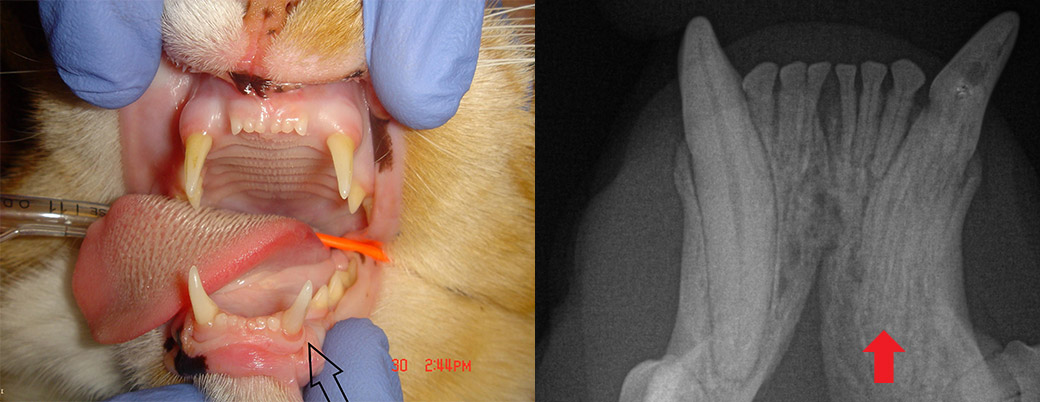tooth resorption cats stages
Some radiographic evidence is detectable such as a change in the dentin. With Type 1 tooth resorption both the crown and root need to be extracted.

External Tooth Resorption In Cats Part 2 Therapeutic Approaches Today S Veterinary Practice
There is no specific identifiable cause for tooth resorption in cats but contributing factors such as periodontal disease Feline Immunodeficiency Virus FIV and genetics may be present.

. These microscopic lesions were all located at the mid root or apical portion of the root and were not associated with inflammation. Stage 4 Extensive dental hard tissue loss cementum or cementum and. Times it is up to the veterinarian or astute owner to diagnose tooth resorption.
Granulation tissue may be. The lesion is usually minimally sensitive because it has not entered the dentin. Tooth resorption cats stages Saturday February 26 2022 Edit.
Cats with oral pain may appear irritable or aggressive have a change in appetite or food preference and may have difficulty chewing and eating food falls from their mouth. In stage 4 this deterioration causes the tooth to weaken and break up. Stage 2 lesions affect the dentin but have not yet progressed into the pulp cavity.
Stage 1 TR 1. Tooth resorption ranges from stage 1 to stage 5 with stage 1 being the least amount of discomfort to stage 3 and 4 being the most painful and having the most destruction of the tooth. In stage 3 the deterioration penetrates the dentin to the pulp.
Five stages of tooth resorption are recognized in cats. As hunters cats are more accustomed to hunting their food and eating little bits throughout the day. In a condition known as a tooth resorption formerly referred to as feline.
Tooth resorptions in cats The tooth resorptions seen so commonly in cats are external and fall into either the PIRR or replacement resorption category. There are five recognized stages of tooth resorption. Cats with clinically missing teeth have also been found to be more likely to have tooth resorption.
Symptoms of tooth resorption in cats can range from. In stage 5 most of the tooth has been destroyed leaving. There are different types and stages of tooth resorption in cats depending on the severity.
In turn will trigger ongoing resorption. Tooth resorption is characterized by severity stage and radiographic appearance type. Full page photo Author.
The American Veterinary Dental College AVDC now classifies this condition simply as tooth resorption with five progressive stages based on the severity of the lesion and three types based. Tooth resorption has been classified based on the extent and location of the resorption. AVDC Tooth Resorption Stages.
Routine radiography is required for timely diagnosis. Tooth resorption is the most common cause of tooth loss in cats and between 30 and 70 of cats show some sign of this destructive process. In other words they are either inflammatory or non-inflammatory replacement in origin.
Healed cemental lesions covered by intact periodontal tissue was seen in some cases. Your veterinarian will obtain intraoral radiographs to assess the type of resorption. Stage 4c - diagram illustration relating to dogs including description information related content and more.
Most of the tooth retains its integrity. In stages 1 and 2 of the disorder lesions resembling cavities form on the enamel and work their way into the cementum layer of the tooth. Cats are not naturally prone to scarfing down a big meal for the day.
A better term based on the proper etiology but only one problemit doesnt just happen in cats. Feline tooth resorption progresses through several stages. With Type 2 tooth resorption a technique known as crown amputation with intentional root retention is appropriate.
Tooth resorption can be difficult to detect with cats often masking signs of oral discomfort or pain. Cats with resorptive lesions may show pain when their jaws are touched and may also have increased salivation or oral bleeding. Treatment is guided by the radiographic appearance of the tooth resorption.
In the literature with the exception of one study22. Teeth from TR cats were much more likely 60 to have microscopic resorptive lesions than teeth from TR-free cats 8. When resorption progresses into the pulp chamber nerve.
Five stages of tooth resorption are recognized in cats. Feline odontoclastic resorptive lesion FORL. Stage 1 resorption presents with only mild clinical evidence of hard tissue loss and is rarely detected.
Classification of Tooth Resorption. This tissue which communicates with the rest of the animals body is surrounded by a bony substance called dentin which accounts for the bulk of the tooths structure. Initially in stage 1 only an enamel defect is noted.
Some cats with tooth resorption also have generalized oral inflammation or stomatitis. Stage 3 Deep dental hard tissue loss cementum or cementum and enamel with loss of dentin that extends to the pulp cavity. All information is peer reviewed.
Dropping food while chewing. Stage 2 Moderate dental hard tissue loss cementum or cementum and enamel with loss of dentin that does not extend to the pulp cavity. Within each of a cats teeth is a chamber root canal that contains tissue made up of blood vessels lymphatic vessels and nerves.
These microscopic lesions were all located at the mid root or apical portion of the root and were not associated with inflammation. Tooth Resorption in Cats. Clinical and Radiographic Examples Stage 4b.
The chart below includes a breakdown of life stages that your cat advances through and concentrates on. All types of teeth in the feline dentition may be affected but lesions seem to be more common in certain teeth. Resorptive lesions can occur at any age and in any breed of cat.
Tooth Resorption in Cats. Stage 1 lesions affect the cementum or cementum and enamel but have not yet progressed into the dentin. Eventually the tooth will be almost entirely gone.
In stage 2 the lesion penetrates enamel and dentin.
Tooth Resorption In Dogs And Cats Vetbloom Blog
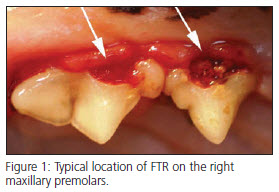
Feline Tooth Resorption Montana Pet Dentistry Oral Surgery
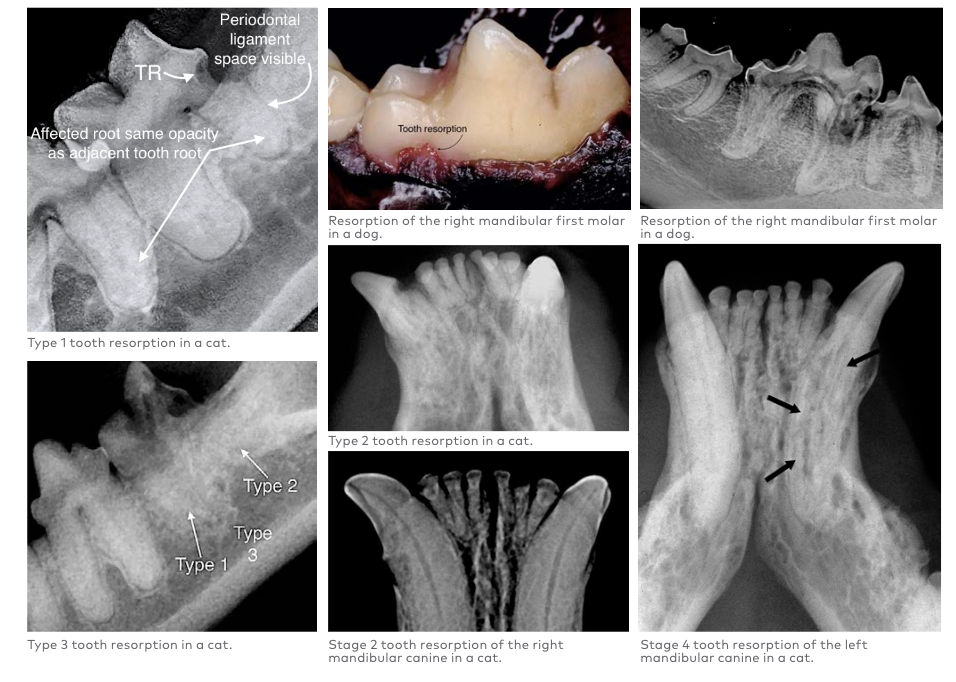
Classifying Tooth Resorption In Cats And Dogs Dvm360
Tooth Resorption In Dogs And Cats Vetbloom Blog
Tooth Resorption In Dogs And Cats Vetbloom Blog
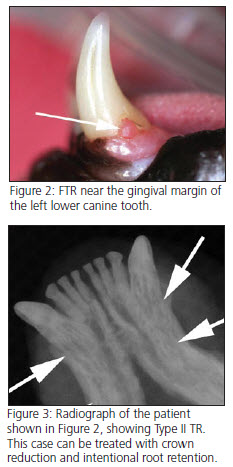
Feline Tooth Resorption Montana Pet Dentistry Oral Surgery

Dental Trivia For Cats Broad Ripple Animal Clinic

External Tooth Resorption In Cats Part 2 Therapeutic Approaches Today S Veterinary Practice
Tooth Resorption In Dogs And Cats Vetbloom Blog

Feline Tooth Resorption Aztec Animal Clinic

External Tooth Resorption In Cats Part 2 Therapeutic Approaches Today S Veterinary Practice

Domestic Feline Oral And Dental Diseases Veterian Key
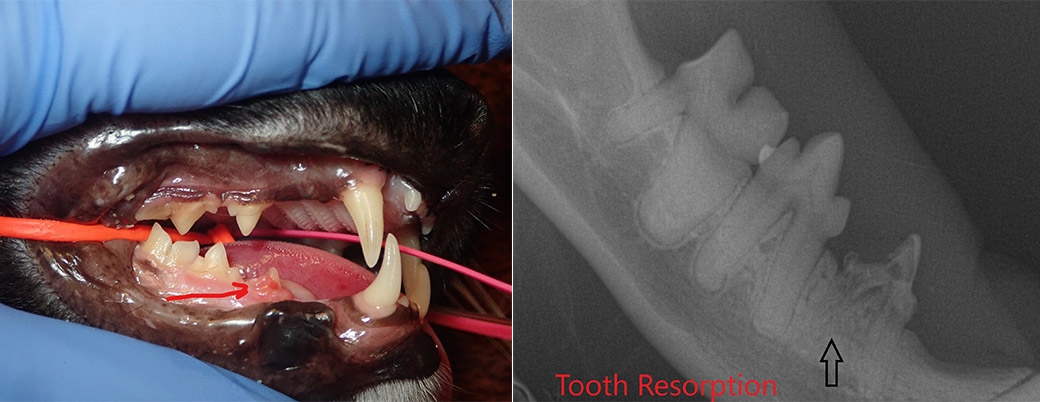
Feline Tooth Resorption Dental Disease In Cats
Tooth Resorption In Dogs And Cats Vetbloom Blog

Feline Tooth Resorption Today S Veterinary Practice

Artstation Feline Tooth Resorption

